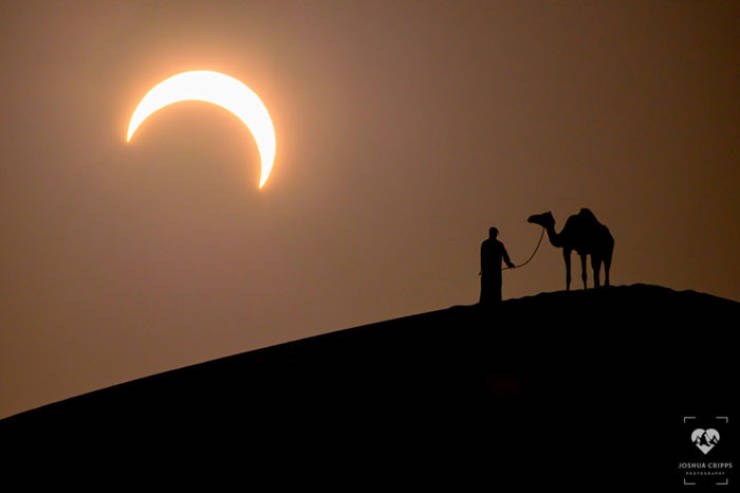Joshua Cripps, the man behind the photo, explains that it needed crazy amounts of planning

Before you go asking the question of what kind of mathematical wizardry Cripps employed, he explained a basic mental-math method: “There’s a calculation for this called the rule of 100: take the size you want the sun to appear and multiply it by 100, and that gives you the shooting distance. So, to get a 3-meter sun, I needed to stand 300 meters (roughly 1,000 feet) away from the camel.”
Besides that, Cripps had to decide on the subject of the photograph. It had to be something representative of the sands, things like Arabian horses or oryxes. He eventually settled on a farmer with his camel.
Also, it didn’t help that Joshua had a very specific vision for the shot. The composition he sought for was to be a camel and a man standing on a sand dune encircled by the eclipse. The man and camel had to turn out as silhouettes, all the while still reflecting a little bit of flare around the outlines.